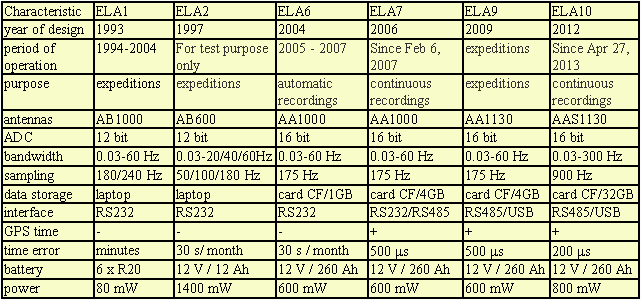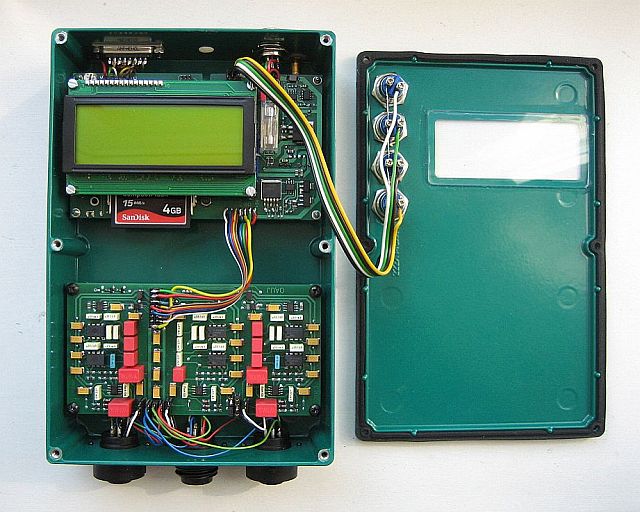Our ELF Measuring Stations |
|
We designed our first battery powered hand-held digital receiver ELA1 in 1993, where "ELA" is the receiver name accompanied with a number providing the receiver version. The receiver was equipped with a 12-bit analog-to-digital converter (ADC) and connected to a passive antenna, AB1000, with a 5 meter coaxial cable. Using this receiver, we carried out dozens of measurement sessions during the period 1994-2004 to Schumann resonance related studies. In 1997, we designed a next generation receiver called ELA2. It was equipped with 4 measurement channels, had 3 different sensitivities, and was powered by a build-in 12V/12Ah gel battery. This receiver enabled switching on low-pass filters with the frequency bandwidth of 20 Hz, 40 Hz, or 60 Hz. A large range of input voltage levels allowed us to register signals originating from different sources, and made possible some multidisciplinary studies. The ELA1 and ELA2 receivers required a laptop computer to record the data. It was connected using RS232 interface and powered by an additional battery. This solution limited continuous recording, but because of a lack of memory cards with a sufficiently large storage capacity this was the only solution available to us back then. In the next prototypes - ELA3, ELA4 and ELA5 - we attempted to solve the problem using 2.5" hard disks with a storage capacity of several megabytes. This solution did not meet our requirements due to high power consumption. The following receiver designs were focused on optimization of power consumption, data acquisition, and time measurement precision. Low power technologies eventually allowed us to minimize power consumption to a level that enable several month of battery operation in ELA6-ELA10. The table below shows a list of parameters of the consecutive ELA receivers used by the Cracow ELF group |
 |
 |
|
Photo above shows our latest measuring station Ela10. The first station with measurement band extended to 300Hz. |
Our ELF Antennas |
|
Over the years we developed several magnetic antennas for our ELF measurement. Originally the antennas were placed horizontally and oriented using a compass with respect to the local magnetic field, with an accuracy of approximately 1 deg at the moment of installation. Since April 27, 2013 the antennas are oriented according the geographical coordinates NS and EW. |
 |